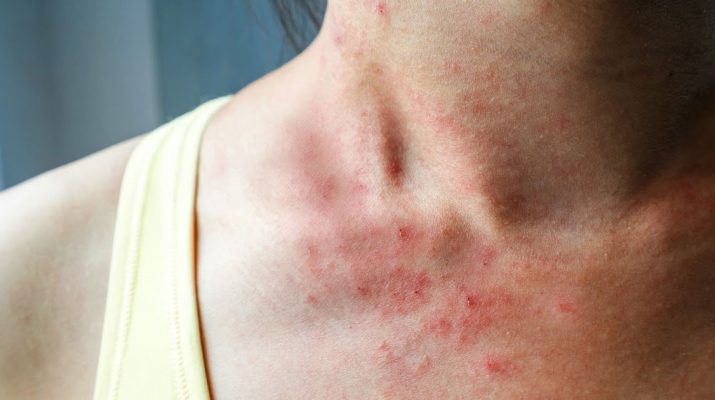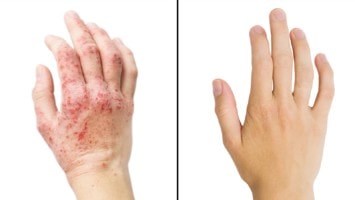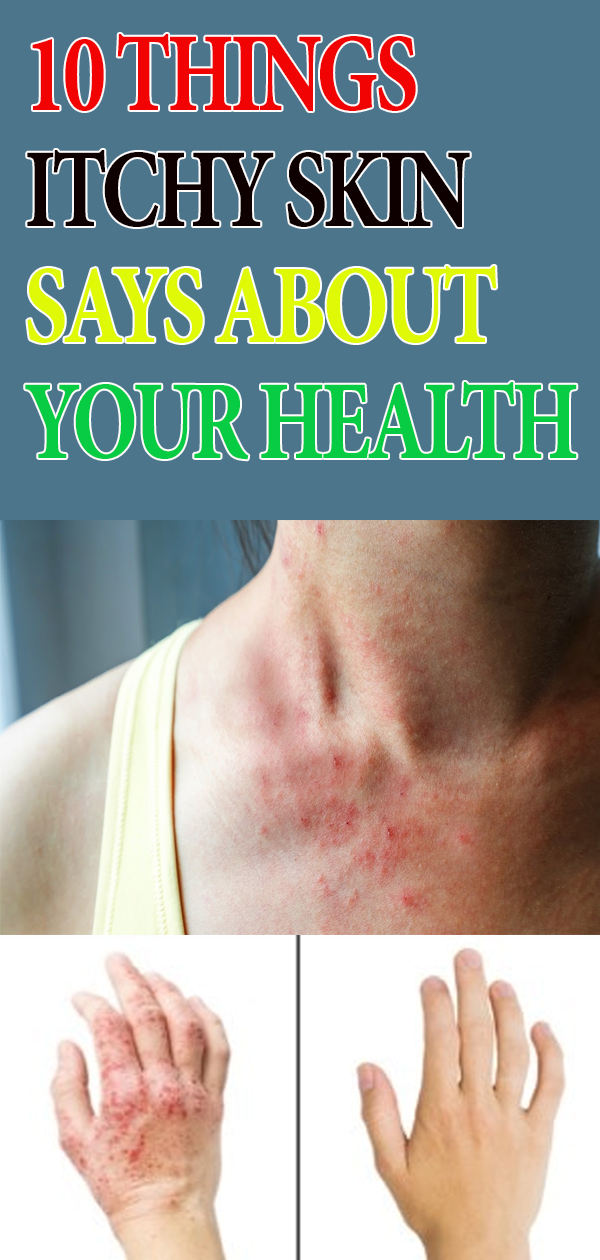Did you know that itchy skin is an actual medical condition? The medical term for “an uncomfortable, irritating sensation that makes you want to scratch” is pruritus (pronounced proo-RIE-tus).
Pruritus
Pruritis is a common condition that usually goes away with minimal treatment. For instance, using moisturizer, bathing with lukewarm water, or using gentle cleansers often helps relieve itchy skin. Long-term treatment typically requires identification of the cause of itchy skin and the use of medications.
- Common co-symptoms of itchy skin include:
- Bumps, blisters, or spots
- Dry and cracked skin
- Scaly, leather-like skin
- Irritation and redness
Itchy skin that lasts longer than a couple of weeks requires evaluation and treatment by a medical doctor (preferably a specialist – e.g. dermatologist). Prolonged itching and scratching of the skin can lead to further complications such as anxiety, depression, or insomnia. The skin can also become infected, injured, or scarred. Itchy skin that lasts for longer than a few weeks may be indicative of a severe disorder.
What Skin Says About Your Health
“Your skin can be a window to your underlying health, says Wake Forest University’s Joseph Jorizzo, MD, one of the experts who literally wrote the book on signs of internal disease. Many underlying health conditions – some very serious – first appear as skin problems.” – WebMD (source)
Our largest body organ is the skin, measuring over 20 square feet in length and weighing around eight pounds (3.6 kilograms). Besides being an elaborate “cover,” the skin provides many essential functions. Of course, the first priority of the skin is to serve as a barrier between an unstable (and often toxic) environment and our innards.
The skin consists of three layers – the dermis, epidermis, and hypodermis. The epidermis is the outermost layer and acts as a waterproof barrier. The pigmentation process that gives us our skin color also takes place in the epidermis. The activity of melanocytes, cells that produce the coloring pigment, melanin, determine a body’s skin color and tint.
The dermis consists of connective tissue, hair follicles, and sweat glands. The hypodermis is a combination of connective tissue and fat, the presence of which helps to protect delicate parts of the body immediately below.
Things Itchy Skin Says About Your Health
-
Butterfly Rash: Contact Dermatitis, Lupus, Rosacea
Butterfly rash is usually the first sign of lupus, an autoinflammatory disorder characterized by inflammation of the skin. Symptoms of lupus can range from mild to severe and include fatigue, fever, hair loss, kidney complications, gastrointestinal problems, swollen joints, and thyroid problems.
Butterfly rash may also indicate other conditions such as contact dermatitis or rosacea. The former is usually caused by irritation from a substance in things like cosmetics, fragrances, jewelry, and plants. Rosacea is a skin disease characterized by skin flare-ups and remissions. Symptoms of rosacea include bumps and pimples, eye irritation, facial redness and swelling, and skin thickening.
-
Skin Plaque: Psoriasis
Skin plaque is an itchy, elevated lesion most commonly associated with psoriasis. Also known as primary lesions, skin plaque may appear to be flat even though it is elevated. Plaques may have definable borders that may arise as different shapes and take on a reddish, scaly appearance. Such skin plaque shapes include:
- Half-moon shaped
- Ring-shaped
- Snake-shaped
- Multicolored
Skin plaques most often appear on the elbows, knees, lower back, and scalp. A specific type of skin plaque – leg plaque – may appear red on the edge and gold-colored in the center.
-
Purple, Flat-Topped Lumps On The Wrist: Hepatitis C
Purplish, flat-topped bumps are most commonly linked to hepatitis C. These bumps usually itch terribly and may be located anywhere on the body. Commonly affected areas include the legs, lower back, genitals, and neck.
Hepatitis C is both a virus and an infection. The virus leads to the infection, which affects around four million people in the U.S. alone annually. Hepatitis C often doesn’t carry noticeable symptoms, with about 80 percent remaining symptom-free. Acute symptoms of the disease may include abdominal pain, dark urine, decreased appetite, joint pain, jaundice, nausea, and vomiting.
-
Flesh-Colored Lesions On The Back: Tuberous Sclerosis
Tuberous Sclerosis is a serious, potentially life-threatening disease that may cause the development of elevated, irritated, flesh-colored lesions on the body. These patches are also called shagreen patches and have a texture resembling an orange peel. Shagreen patches may appear across the cheeks, nose, and torso.
Tuberous sclerosis causes the growth of benign tumors in the brain and other vital organs. Symptoms of the condition may include abnormal heart rhythm, calcium deposits on the brain, developmental disabilities, and intellectual disabilities.
-
Chronic Itch: Neurological Disorder
Itches that do not find even temporary relief by creams and other well-accepted topical medications may arise from a neurological condition. The urge to itch arises from the activity of the brain and nervous system, and scientists have discovered that misfiring of this system can create unexplainable itchy sensations.
For example, the peripheral nerves extend from the spinal cord to the skin and throughout the body. If these nerves become damaged, they can become too sensitive, leading to itching sensations.
-
Swollen, Pale-Red Bumps (Hives): Various Causes
Hives are a type of skin outbreak characterized by burning, itching, or stinging skin. Hives may appear anywhere on the body, and commonly show up on areas of the face, ears, throat, or tongue. Similar to hives is angioedema, an allergic reaction that causes swelling directly underneath – as opposed to on – the skin.
The release of histamine causes angioedema and hives, which sometimes leads to blood plasma leaking from blood vessels. Conditions that may cause this include allergy, certain medicines (including aspirin and NSAIDs), insect stings, and sunlight exposure.
-
Scaly, Red, Dry Patches: Psoriasis
Scaly, itchy, red patches that form on the arms, elbows, knees, hands, and other parts of the body are often linked to psoriasis, a chronic skin condition caused by an overactive immune system. Common symptoms of psoriasis include inflammation, skin flaking, and the presence of “thick, white, silvery, or red” patches of skin.
Psoriasis is not a curable condition but can be symptom-controlled through the use of topical treatments, systemic treatments, or a combination of both.
-
Itchy Bumps Or Blisters: Celiac Disease
Dermatitis herpetiformis (DH) is the skin manifestation of celiac disease, an inflammatory bowel disease (IBD) which arises from an impaired immune response to eating the wheat protein gluten. DH signals the mucosal system of the intestines to release immunoglobin A (IgA), a type of antibody. IgA travels through the bloodstream and binds to skin cells, producing blisters or bumps. These extremely itchy bumps and blisters often arise in areas of the buttocks, elbows, and knees.
Topical medications can provide relief for itchy skin caused by DH. Celiac disease is manageable through diet. Continued consumption of gluten may result in health complications such as anemia, bone density loss, malnutrition, or ulcerative colitis – a more severe inflammatory bowel disease.
-
Itchy, Raised Welts (Or Hives): Allergy
Exposure to allergens may lead to the growth of welts, which may become itchy. These bumps are also called hives. Besides itching, hives often sting or burn. Allergic hives may appear anywhere on the body and vary widely in size.
Hives brought on by an allergic reaction are often due to something (like a chemical) that has been inhaled or ingested. Hay fever, also called allergic rhinitis, may also cause hives. Allergic sensitivity to airborne mold spores or pollens are common causes of hay fever.
-
Blisters And Burn-Like Marks On Hands And Forearms: Eczema
Eczema is a blanket medical term for a group of conditions that cause the skin to become inflamed. Eczema affects around 30 million Americans, making it one of the most prevalent skin conditions in North America. The skin condition is often seen in babies and children, who often develop rashes or blisters on their cheeks and chin.
Complicating the itchy sensations brought on by eczema is that scratching affected areas can spread it to other parts of the body. Several types of oral and topical medications may be helpful in relieving eczema symptoms.
Final Thoughts: When To Seek Medical Treatment
As mentioned, it is common to occasionally experience itchy skin. Most causes of skin itch – dry skin, acute rash, etc. – are relatively harmless. However, itchy skin that lasts longer than 2-3 weeks and doesn’t improve with self-care measures should be evaluated by a doctor or specialist (dermatologist).
Consider visiting a medical professional under the following circumstances:
- The itch is severe.
- Skin irritation interrupts your daily routine or your sleep.
- The skin problems surface suddenly and without explanation.
- Skin anomalies spread throughout the body.
- Skin issues are accompanied by symptoms such as exhaustion, fever, blistering, changes in bowel habits, weight loss, or insomnia.
If the condition lasts for 2-3 months despite doctor intervention and treatment, see a dermatologist to be evaluated for skin disease and an internist to be evaluated for other diseases.



